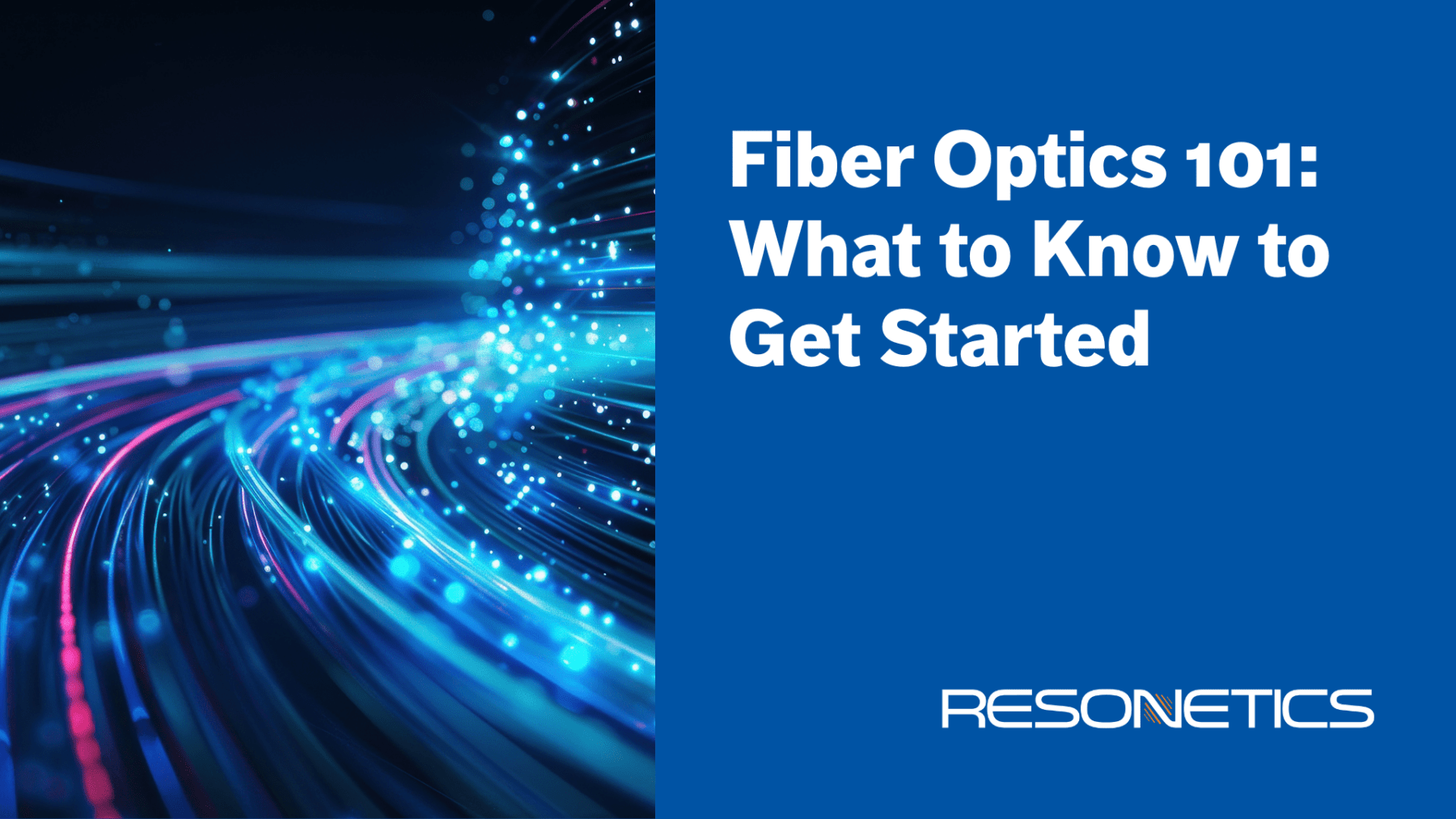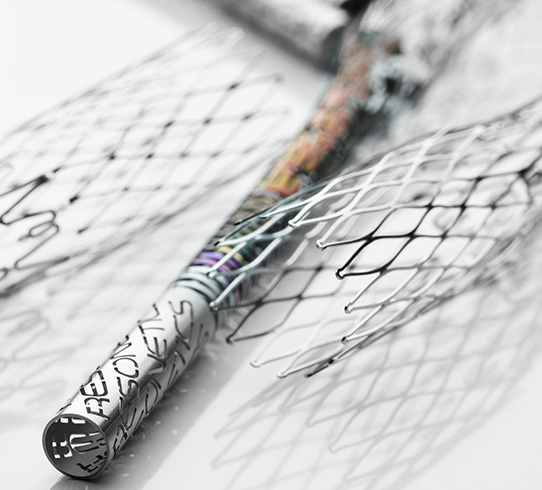
Mechanical engineers developing medical devices are experts in their field—but when exploring fiber optic technology for the first time, some questions may arise. How much can a fiber bend without damage? What’s involved in making a connector? What tension can it withstand?
This introduction to fiber optics provides a clear starting point. It covers essential concepts, practical guidelines, and key considerations so product developers can confidently integrate optical fiber into their designs. Whether evaluating feasibility or preparing for implementation, this guide offers the foundation for getting started.
Fiber Optics: A Proven Technology Across Industries
Fiber optics, a technology that transmits light through thin strands of glass known as optical fibers, has already proven its reliability and efficiency in a wide range of modern industries. From telecommunications to aerospace and industrial sensing, fiber optics has become the backbone of data transmission and precision measurement. Its ability to transmit light over long distances with minimal loss makes it indispensable in environments where accuracy and reliability are critical.
In the medical field, fiber optics has also established itself as a trusted technology, enabling advancements in minimally invasive procedures, patient monitoring, and diagnostic imaging. For instance, endoscopes, laser surgery equipment, and biomedical sensors often rely on fiber optic technology for their high precision and minimal loss.
With its established presence across industries and well-documented benefits in healthcare, fiber optics is a mature and dependable choice for medical device innovation. But what exactly is optical fiber, and what is it made of?
Basics & Functionality
What is optical fiber?
An optical fiber consists of three main layers: the core, cladding, and coating. The core, made of glass (or plastic), is the central pathway where light travels. Surrounding the core is the cladding, which has a lower refractive index and ensures that light remains confined within the core by reflecting it inward. The outermost layer, the coating, protects the fiber from physical damage, moisture, and environmental factors.
How does it work?
Fiber optics rely on the principle of total internal reflection to transmit light over long distances with minimal loss. Total internal reflection occurs when light traveling through a denser medium (like the core) hits the boundary with a less dense medium (like the cladding) at a critical angle. Instead of passing through the boundary and continuing into the cladding, light is reflected back into the core. This process ensures the light stays within the core, even as it bends around corners.
How is it made?
The manufacturing of optical fiber begins with the creation of the fiber preform, which is a large, solid cylinder made of glass with the same composition as the core and cladding. This preform is heated and drawn into thin strands through a process known as “stretching,” where the material is pulled through a furnace to form the long, delicate fiber.
As the fiber is drawn, it is coated with a protective layer of acrylic or other materials to prevent damage and to support the optical properties. During this process, additional protection is applied, such as a tough outer coating to protect against physical stress and environmental factors.
What are the steps to connectorize optical fiber?
Connectorizing optical fiber involves several precise steps to ensure reliable connections. First, the fiber is stripped of its protective coatings and cleaned. The fiber is then cleaved using a fiber cleaver, a process of cutting the fiber to create a clean, flat end that is perpendicular to the fiber axis. Next, the fiber is inserted into the connector’s ferrule, and depending on the connector type, it is either crimped or bonded with adhesive. The fiber’s end is polished to ensure optimal light transmission, with the process varying based on the connector’s requirements. Finally, the connection is tested for performance and quality, ensuring minimal loss and proper alignment for efficient transmission.
What are the different types of optical fiber?
There are two main types of optical fiber: single-mode fiber (SMF) and multi-mode fiber (MMF). Single-mode fiber has a small core (8-10 microns) that allows only one mode of light to travel, minimizing loss and dispersion over long distances, making it ideal for long-distance connections (above 500 meters). In contrast, multi-mode fiber has a larger core (50-100 microns) and allows multiple modes of light, which can cause dispersion over longer distances, making it better suited for shorter distances (up to 500 meters).
What is the right optical fiber for medical applications?
Whether made of acrylic, polycarbonate, high-purity silica or doped glass, polymer (fluorinated or not), or sapphire, each type of optical fiber is designed for specific applications based on loss, flexibility, durability, and environmental resistance.
Glass optical fibers offer high optical clarity and minimal loss, making them ideal for high-precision applications such as endoscopy, laser surgery, and biomedical sensors. Polymer optical fibers (POF) are more flexible and impact-resistant, making them well-suited for wearable sensors and short-distance light delivery devices. Various types of protective coatings can be applied to optical fibers. Acrylate is the easiest to work with due to its relatively large diameter. Polyimide, while requiring more expertise, is still relatively straightforward to apply and is commonly used. It has a smaller diameter and is typically applied during the manufacturing process, immediately after the fiber has been drawn. In contrast, metal coatings are more commonly used in industrial applications and are rarely employed in the medical field.
Performance & Limits
What are the bending angles that an optical fiber can tolerate?
The bending tolerance of an optical fiber depends on its type, with tighter bends increasing transmission loss or risking breakage. Glass optical fibers typically require a minimum bend radius of 10 to 30 times their diameter, though bend-insensitive variants allow for sharper bends without as much light loss. Polymer optical fibers (POF) typically have large diameters, making them difficult to use for medical sensors or disposable devices where small diameters are required. However, they are commonly used in applications like wearables.
General Rule of Thumb for Bending:
- Avoid bending below 10× the fiber’s diameter unless using bend-insensitive fiber.
- Sharp bends (below recommended radius) increase signal loss and may cause fiber breakage.
- For medical applications, glass fibers with polyimide coatings are the best option for tight bending, assembly processes, and sterilization resistance.
What are the tension limits that an optical fiber can withstand?
The strength and tension limits of optical fibers depend on their material and construction. Glass optical fibers have a high tensile strength of 2–5 GPa and can withstand 50–100 N of pulling force, but they can sometimes be prone to micro-cracks over time. Polymer optical fibers (POF) are more flexible but have a much lower tensile strength of 20–100 MPa and can only handle <10 N of tension. Fluorinated polymer fibers offer improved mechanical durability, tolerating 10–30 N of tension. Sapphire optical fibers, while strong (up to 2 GPa), are highly brittle and cannot endure much pulling force. For reinforced fibers, tension resistance can reach 200 N, but unprotected fibers should stay within their respective limits to prevent breakage or signal degradation.
General Guidelines for Handling Tension:
- Fibers with protective layers can tolerate higher forces (up to 200 N).
- Loose fibers without reinforcement should not exceed 100 N for glass fibers and 10 N for polymer fibers.
- Dynamic stress (repeated pulling) may accelerate failure, especially in glass fibers.
How do connector and splice quality impact optical fiber performance?
The quality of connectors and splices significantly impacts optical fiber performance by influencing insertion loss, reflection, and signal alignment. Poorly aligned connectors, scratched or contaminated end-faces, and air gaps can cause Fresnel reflection and signal attenuation, reducing transmission efficiency. Fusion splicing, which fuses fiber ends with heat, minimizes loss, while mechanical splicing, using a V-groove and index-matching gel, has higher loss. To maintain optimal performance, precision polishing, proper cleaning, and high-quality splicing techniques are essential, as poor connections lead to increased attenuation.
Best Practices for High-Quality Connectors:
- Use precision-polished connectors (e.g., UPC or APC for reduced reflection).
- Regularly clean and inspect connector end-faces using fiber cleaning tools.
- Use proper mating techniques to avoid air gaps.
Best Practices for Low-Loss Splices:
- Use fusion splicing for critical applications to minimize loss.
- Properly cleave fiber ends to ensure smooth and even surfaces before splicing.
- Keep splicing equipment and fiber surfaces free of contaminants.
The Importance of Fiber Optics in Medical Applications
Fiber optics play a crucial role in medical applications by enabling precise, real-time measurements in environments where traditional sensors fall short. In medical devices, fiber optics provides minimally invasive solutions for monitoring pressure, temperature, and biochemical signals, improving patient diagnostics and treatment. By leveraging the advantages of fiber optics—such as immunity to electromagnetic interference, high sensitivity, and compact integration—mechanical engineers can develop innovative medical devices that push the boundaries of technology even further.
Questions specific to your medical application? Contact Us





